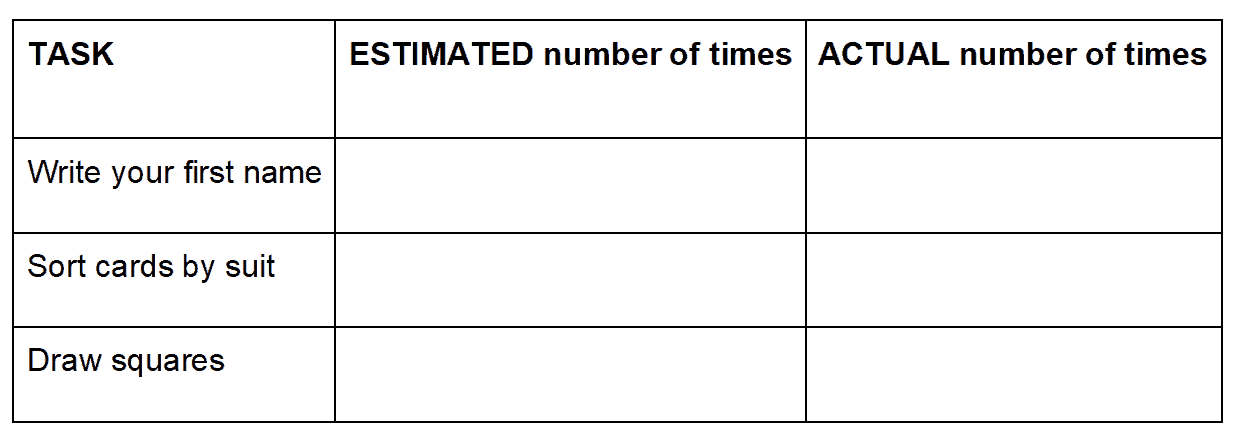Time management – figuring out how long you will need to complete a particular homework assignment or chore — is an important skill. It’s also a key element in the work of industrial engineers, who organize the people, materials, and equipment involved in production, and improve systems by breaking big jobs into smaller chunks and studying how to make tasks easier.
Thinking about chunks of time such as one second, one minute, five minutes, thirty minutes, and one hour and learning to estimate is an important step in developing an understanding of the different components of measurement as well as beginning to optimize activities.
Industrial psychologist and engineer Lillian Moller Gilbreth, and her husband, invented what is known as motion study, testing out their theories of the best ways to optimize activities on their large family (the basis for the movie Cheaper by the Dozen). Read her ASME biography here. Let’s replicate that idea for this activity!
What You Will Need
- 1 Deck of Cards
- Timer or stopwatch
- Pencil
- Paper
Instructions:
You are going to do a number of tasks to determine how fast you can complete an activity.
1. First consider each task and estimate how many times you can complete it in one minute. Write your estimate in the table below.
2. Set your timer for 1 minute, hit start and do the first task. Count how many times you ACTUALLY do the task before the timer goes off and write it in the box. Do this for each task below.

3. Compare each tasks total to your estimate, were they the same or different? Why might they be different?
4. Consider what you’ve done so far:
- Did your handwriting get better or worse?
- Was your stack of cards tidy or messy?
- If you’re an industrial engineer, do you think it is better to do a lot but have it be messy or not all the same or to do fewer but have them be good quality?
- Why do some activities feel like they’re longer than others do?
- Why were some activities harder to estimate than others?
5. Now you’re going to apply the same process to a more complex task – folding paper airplanes. Using the simple instructions below, estimate how many paper airplanes you can fold in five minutes.
Actual: ________

6. Set your timer for five minutes, hit start and begin folding paper airplanes. How many did you get folded before your time was up?
Actual: ________
7. Brainstorm ideas for improving on your performance, like doing more than one at a time or doing step 1 for multiple airplanes before doing the next step.
8. Set your timer and do the activity again and see if your improvements increase how many paper airplanes you fold.
Optimized Actual: ________
Great work! You can continue learning more about Lillian Moller Gilbreth and Industrial Engineering through SWE’s Introduction to Industrial Engineering STEM Pathways course. Check out the full STEM Pathways digital library here!
Author
-

SWE Blog provides up-to-date information and news about the Society and how our members are making a difference every day. You’ll find stories about SWE members, engineering, technology, and other STEM-related topics.






